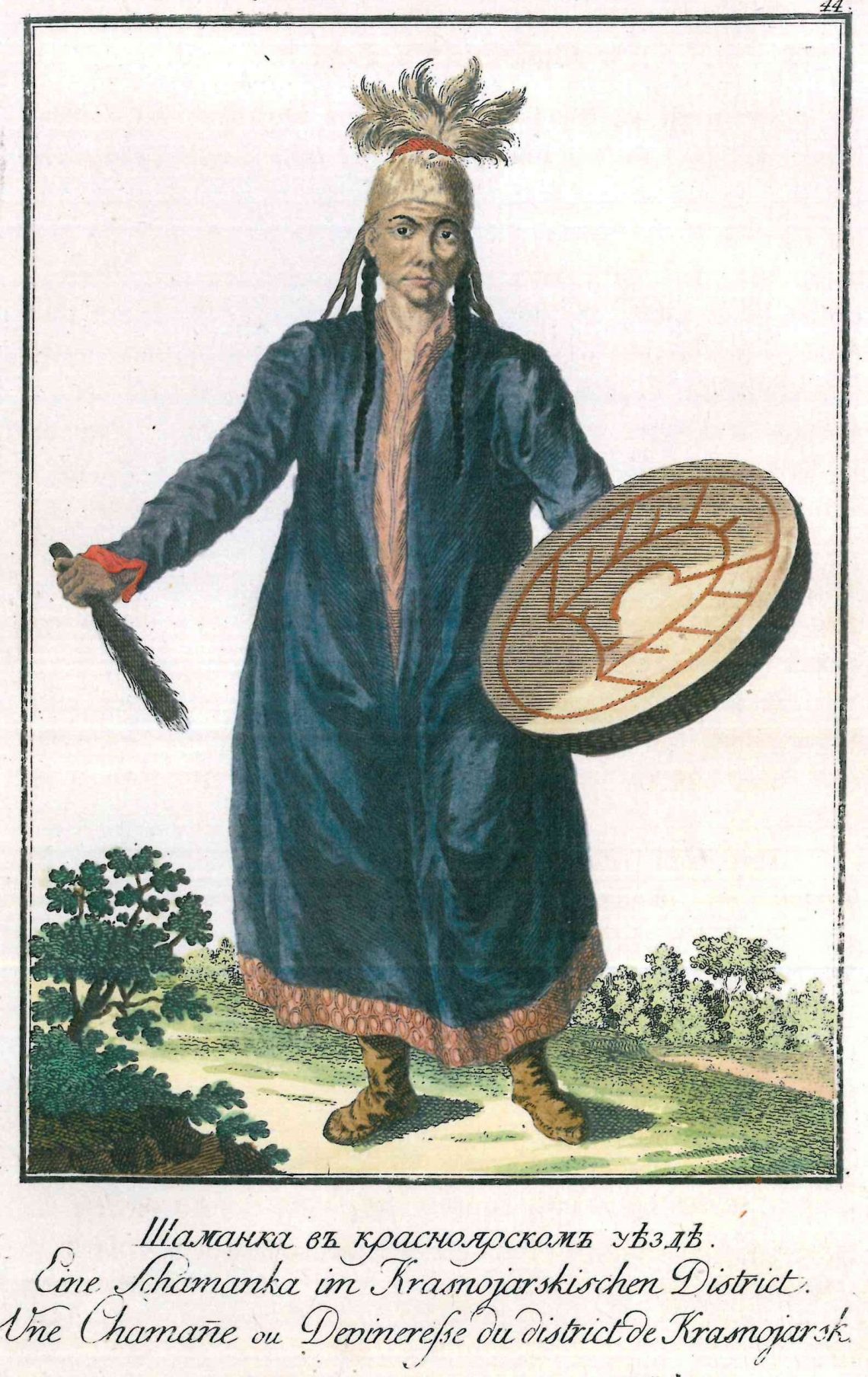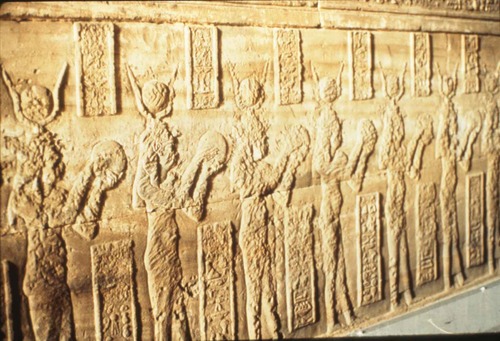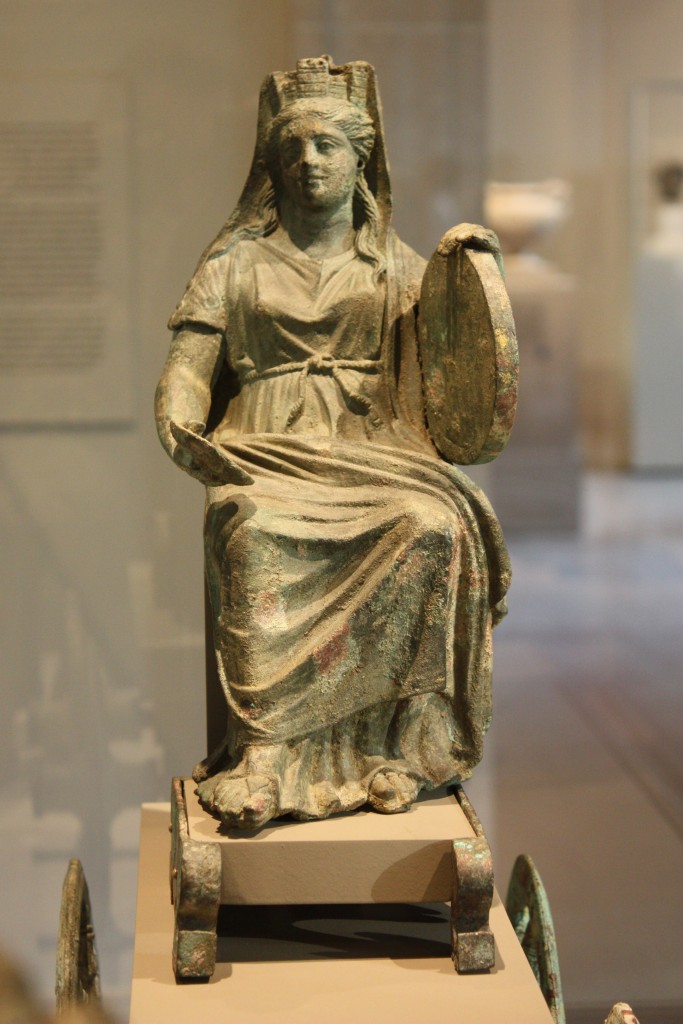ARTICLE by MORENA LUCIANI RUSSO
PART I
Drumming figures amongst the most ancient arts favored by women, as attested by vast ethnographic documentation. Sounding bells and drumming have ever been amongst the instruments privileged by both women and men to reach Shaman states of awareness.
The very essence of a Shaman drum is constituted by its frame, skin being strung up on one or both of its sides. The sound such produced permits us to communicate with beneficial spirits, and travel across words invisible. The drum serves the Shaman as a kind of lifebelt throughout her or his voyage, when she or he must return into her or his own body from a condition of trance (1).

From a strictly scientific point of view, the sound of the drum increments the Alpha and Theta waves of the human brain. The former represent frequencies that activate the connections between the two brain hemispheres, and bring about a sensation of well-being and relaxation, while the latter modify ordinary consciousness, inducing dreamlike states of ecstasy and heightened creativity. Drumming has a tremendous impact upon the human brain, and thus holds a central position within Shaman ceremonies.
Nowadays, there is a lot of talk throughout western countries dedicated to mindfullness and other types of meditation as a remedy against stress and anxiety symptoms. But we should not forget the therapeutic effects of drumming, especially if practiced in a group, which still receive little attention.
In the eighties, Sandra Harner and Warren Tyron, following a session of Shamanic drumming, observed that after half an hour of drumming, participants found their body defenses, serenity and psychic and physical balance to have increased considerably, accompanied by a heightened feeling of empowerment, satisfaction and self-consideration.
Ten years later, neurologist Barry Bittman published a study showing that group drumming not only acts on a psychological level, but actually increases the body defenses of all participants, and first of all the activity of so called killer cells, which make out and destroy those cells within our body which might be infected with some virus or cancer.
Research conducted by psychotherapist Robert L. Friedman points into the same direction: drumming is considerably beneficial to the condition of patients affected with symptoms such as Alzheimer, Autism, Parkinson and various immunity deficiencies.
Humans, and especially women, have always used drumming for healing and ritual purposes. In our present day society, this might seem strange. Today, the use of percussion instruments would seem to be a primarily male domain. But we must not forget that the first drums we know of date back as far as 5600 BOE, being depicted in a rock painting at Çatal Hüyük, a matriarchal Neolithic settlement where, as archeo-mythologist research has pointed out, the Goddess was worshiped as Goddess of Life, Death and Animals, and women held an important role in ritual and religious life.
Layne Redmond, a percussionist who has dedicated in-depth study to the use of drumming by women in antiquity, points out that:
Rhythmic music seems to have been particularly important in rituals associated with the ancient goddesses. We often find groups of women musicians, singers and dancers amongst the first representations of religious rituals. Drumming was at the musical and psychic core of such rituals. From Egypt to India, from Cyprus to Crete, and from Greece to Rome, priestesses and other officiating women used drumming to celebrate their goddesses, and the infinite rhythmic energy of life (REDMOND 1997)
The very first drummer we know of was a woman. She lived around 2380 BOE, and her name was Lipushiau, grand-daughter of King Naram Sim and high priestess of the moon sanctuary of Ur. Sumerian culture has also left us with numerous statuettes depicting women and goddesses drumming. According to eminent musicologist Walter Wiora, these first examples from the Sumerian culture carry on a tradition that goes well back to Neolithic times.
Drumming by women is also attested from Ancient Egypt. The temple of Dendera, dedicated to the goddess Hathor, comprises a space named Mammisi, a sanctuary where women went to give birth. One of the walls depicts thirty and two priestesses drumming. On the opposite side, twenty and nine priestesses hold a scepter and a Sistrum, a jingling instrument or rattle used by ancient Egyptian women in rites.

According to Redmond, women knew certain rhythms that favored uterine contraction, and drumming protected and guided them through life.
Throughout the entire Mediterranean, we find statuettes and low reliefs depicting women drumming, amongst them, and of particular interest, an image of the ancient Anatolian goddess Cybele, direct descendant of the Goddess of Animals of Çatal Hüyük. Worship of Cybele was adopted first by the Greeks, and then by the Romans, and the fact that she is often depicted drumming refers to the oracular powers with which her priestesses, and later her eunuch priests, were invested.

Throughout the entire Mediterranean, women also employed drumming during funeral rites. It was believed that the beat would favor the voyage of the dead, and provide a helpful means of bringing about their rebirth. Such beliefs found their reflection in nature. Our ancestors were well aware that the vibrations produced by drumming would quicken the germination of seeds sown, and empower the growth of vegetation. So why should it not aid and hasten the voyage of the dead as well?
According to Redmond, drums are shaped like the moon. It is the moon that beats the rhythm of life on earth. Considering that this profound relationship between women, the moon and time has been accounted for by the bone calendars of the Paleolithic age, it is hardly surprising that women should sound the drums wherever this relationship was honored and respected.
When the first Indo-European populations invaded the Balkan and Mediterranean areas of Ancient Europe (see Gimbutas 2008), this sacred correspondence was lost, and women were deprived of their political and ritual roles. So that drumming became the exclusive domain of male priests. And from that time on, drumming began to be used during military parades.
In Europe, Church prohibited any dancing and ritual singing by women during the Council of 826 OE, but went way beyond that during the 13th. century, putting a ban on the women that danced and performed for the dead, and forbidding them to partake in funerals.
Christianity was mainly responsible for the anathema imposed on drumming throughout the entire Mediterranean area.
Ethnomusicologist Paolo Pacciolla points out that
drumming was the very core and center of the rites that preceded Christianity, and prohibiting drumming a manner of eliminating all the ancient altars of previous cults. A similar process was underway in the Islamic world and musical culture, where drumming represented an essential metric function (Pacciolla 2008).
A similar expropriation has occurred in China, where the Wu, Shaman women who invoked rain on the mountainsides, holding serpents in their hands, and drumming, as a means of healing and divination, where deprived of their ritual roles when Confucianism uprooted matriarchy around 100 BOE.
Can it be mere coincidence that all these religions connected to patriarchal social systems should have outlawed drumming, and thus attempted to suffocate female spiritual energy?
END OF PART ONE
Testo (C) Morena Luciani Russo
ACCORDING TO THE LAW 248/00 THIS TEXT CAN BE USED BY QUOTING THE AUTHOR
(1) Personally, I prefer the expression Shaman states of consciousness to the reductive term “trance”. Cit. Pratt 2007.(For any further detail, see my book “Donne Sciamane”).
BIBLIOGRAPHY
Belli Remo, “Interview with Dr. Barry Bittman”
Gimbutas M. Il Linguaggio della Dea, Venexia ed., Roma 2008
Luciani M., Donne Sciamane. Venexia ed., Roma 2012.
Tedoldi D., L’Albero della Musica, Anima ed., Milano 2006.
Maxfield M., “The Journey of the Drum”, in Re-vision 16, n. 4,
1994, pp. 157-163 e Neher A., “A Physiological Explanation of Unusual Behaviour in Ceremonies Involving Drums”, in Human Biology 6, 1962, 151-160.
Pacciolla P. e Spagna A.L., La gioia e il potere. Musica e danza in India, Besa, Nardò 2008.
Pratt C., An Encyclopedia of Shamanism, The Rosen Publishing Group, New York 2007.
Redmond L., When the Drummers Were Women. A Spiritual History of Rhythm, Three Rivers Press, New York 1997, p. 10.
Wiora W., The Four Ages of Music, W.W. Norton, University of Michigan, 1965.
Eisinger Dale, “Not Just for Music, Drumis Therapytoo.”